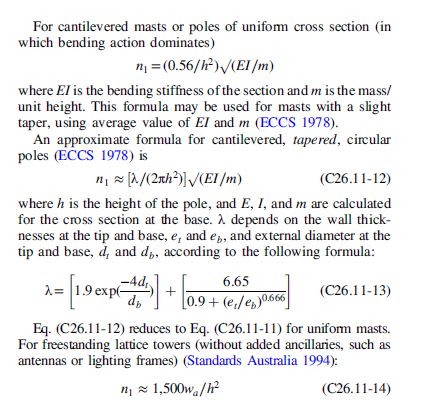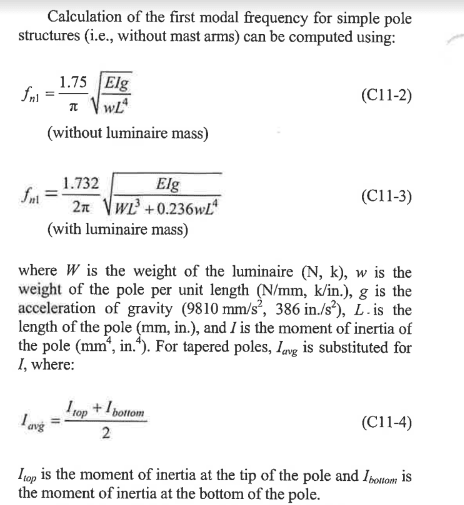ReverenceEng
Structural
Greetings!
Have a ~200 FT pole Sign with a huge cabinet on top. As such, we have a lumped mass at the top, and we have what I would assume to be a non-negligible mass of the pipe along its length, which decreases along the length from top to bottom. Obviously, 'I' decreases, too.
There is a related post from about a decade ago, which gives some insight, but it seems the responses and some of the resources such as ASCE commentary are limited to cases with a lumped mass or a pipe with a relatively uniform mass and 'I' but no ass at the top.
Is there a good approximation (such as a summation) for working with a multi-stage pipe structure ("tapered" pipe) and with a lumped mass that can be done by hand without jumping into the depths of modal analysis in RISA (or the like)?
Maybe there is a resource out there I have overlooked?
Asking for a friend.
Have a ~200 FT pole Sign with a huge cabinet on top. As such, we have a lumped mass at the top, and we have what I would assume to be a non-negligible mass of the pipe along its length, which decreases along the length from top to bottom. Obviously, 'I' decreases, too.
There is a related post from about a decade ago, which gives some insight, but it seems the responses and some of the resources such as ASCE commentary are limited to cases with a lumped mass or a pipe with a relatively uniform mass and 'I' but no ass at the top.
Is there a good approximation (such as a summation) for working with a multi-stage pipe structure ("tapered" pipe) and with a lumped mass that can be done by hand without jumping into the depths of modal analysis in RISA (or the like)?
Maybe there is a resource out there I have overlooked?
Asking for a friend.


